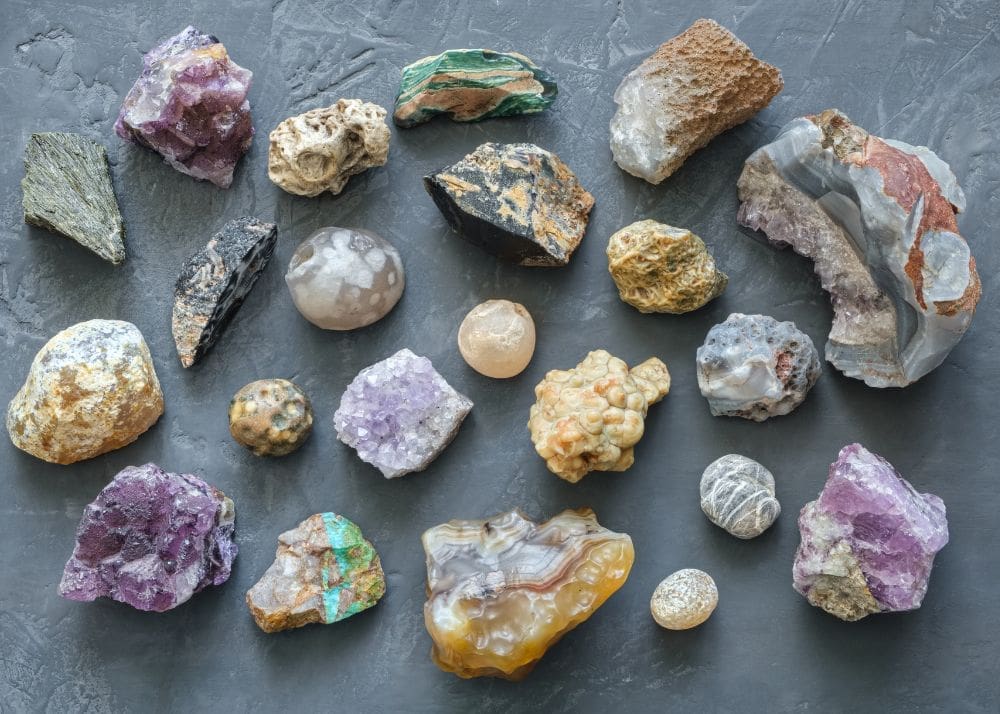Mineral Care: Ensuring the Longevity of Your Collection
Introduction to Mineral Care
Mineral collecting isn’t just a hobby; it’s a commitment to preserving the Earth’s geological masterpieces. The concept of mineral care is central to this commitment, ensuring that each specimen remains as pristine as the day it was unearthed. It is the responsibility of every collector to understand the importance of mineral stability and implement practices that maintain the condition and value of their collection.
Why Stability Matters in Mineral Collections
Collectors’ concerns about mineral care stem from the understanding that minerals, much like any other natural element, are subject to environmental effects. Ensuring the stability of minerals is not just about retaining their beauty but also about safeguarding their scientific and educational value. This is why collectors must strive to keep their specimens in conditions that closely mimic their natural environment.
The Science of Preserving Minerals
When minerals are extracted from their natural setting, they can become vulnerable to changes. To address this, collectors should focus on creating a stable environment that minimizes the risks of deterioration. It’s not simply about avoiding the obvious threats; it’s about delving into the nuanced science of mineral care to protect these treasures from the subtle dangers of environmental change.
Essential Mineral Care Practices
A comprehensive approach to mineral care involves several key practices that together help in maintaining a mineral’s integrity. These practices are summarized in the list below, providing a quick reference for any collector to ensure their specimens endure through time:
- Environmental Control
- Purpose: Ensures minerals are kept in conditions that mirror their natural habitats to prevent degradation.
- Examples: Managing light, air quality, and temperature.
- Proper Storage
- Purpose: Guards against mechanical damage and environmental harm.
- Examples: Utilizing non-reactive shelving and secure casing.
- Regular Inspection
- Purpose: Early identification and remediation of any potential issues.
- Examples: Frequent visual and physical checks.
- Handling With Care
- Purpose: Minimizes physical stress and wear during interactions.
- Examples: Gentle handling, using appropriate tools and protective gear.
Creating a Safe Haven for Your Minerals
Every mineral care action taken is a step towards protecting the natural legacy in your possession. From the temperature in the room to the positioning of lighting, every detail matters. The goal is to create a sanctuary where minerals can persist, unaffected by the external world, for as long as possible.
Conclusion: The Art and Science of Mineral Care
Mineral care is both an art and a science that demands attention, patience, and knowledge. As a collector, embracing this aspect of mineralogy can make the difference between a fleeting collection and a timeless one. By adhering to the practices outlined, collectors can ensure that their mineral specimens continue to captivate and educate for years to come.
10 FAQs on Mineral Care:
- What is environmental control in the context of mineral care?
- Environmental control refers to maintaining specific conditions (like humidity, temperature, and light exposure) to mimic a mineral’s natural environment, thereby preventing any weathering or chemical reactions that could degrade the mineral.
- Why is proper storage important for mineral specimens?
- Proper storage is crucial to protect mineral specimens from physical damage, dust, and adverse environmental factors. It ensures that the minerals are kept in conditions that prevent deterioration over time.
- How often should I conduct regular inspections of my mineral collection?
- The frequency of inspections can vary, but it’s generally recommended to inspect your collection thoroughly at least once every few months or anytime you suspect a potential issue. This helps in early detection and remediation of any problems.
- What does handling with care entail when dealing with mineral specimens?
- Handling with care means being mindful of how you touch, move, and interact with mineral specimens to avoid causing damage like scratches or chips. This often involves using protective tools and ensuring gentle handling.
- Can environmental changes really affect minerals that seem so sturdy?
- Yes, even though minerals are inorganic and seem sturdy, they can be sensitive to environmental changes. Factors like humidity, temperature shifts, and exposure to chemicals or light can alter their appearance and structure over time.
- What are some examples of proper storage solutions for mineral collections?
- Proper storage solutions can include padded drawers, individual containers, display cases with UV protection, and climate-controlled environments. The key is to minimize exposure to harmful conditions and physical stress.
- What should I look for during a regular inspection of my minerals?
- During an inspection, look for any signs of change in the mineral’s color, luster, or structure. Also, check for any new chips, cracks, or other physical damage.
- Are there specific tools recommended for handling mineral specimens?
- Yes, tools like soft brushes, padded tweezers, and cotton gloves can help in safely handling minerals. It’s important to use tools that do not exert unnecessary pressure or cause abrasion.
- What immediate steps should I take if I notice damage to a mineral specimen?
- If you notice damage, isolate the specimen to prevent further harm and consult with a professional conservator or experienced collector for advice on possible remediation.
- Can improper lighting affect minerals, and how can I prevent any damage?
- Improper lighting, especially direct sunlight or intense artificial light, can lead to fading or other changes in minerals. To prevent this, use diffused lighting and avoid placing minerals in direct sunlight. For display cases, consider using LED lights that emit minimal heat and UV radiation.

